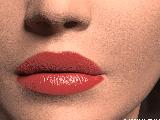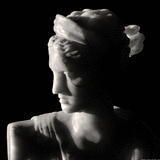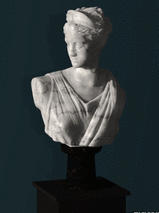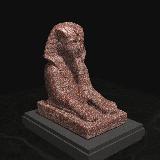Subsurface Scattering
All non-metallic materials are translucent to some degree.
This means that light scatters inside the material before being
either absorbed or leaving the material at a different location.
This phenomenon is called subsurface scattering.
True subsurface scattering cannot be simulated using the ubiquitous
BRDF (Bidirectional Reflectance Distribution Function). Instead
it requires a full simulation of the BSSRDF (Bidirectional
Scattering Surface Reflectance Distribution Function). This is fairly
costly, but it can be done quite efficiently using photon
mapping as described in
my book as well as
my papers. Particularly relevant is
is this SIGGRAPH'2001 paper
presenting the first practical BSSRDF model for computer graphics - this
paper uses a fast dipole diffusion approximation in combination with
an accurate term for single scattering. A follow-up paper presented a hierarchical evaluation technique for the
BSSRDF which is substantially faster (our test results showed a
speed improvement of a factor 150).

|
This translucent teapot was rendered in 7 seconds on a 800MHz dual-P3
PC using a new fast hierarchical rendering technique for translucent
materials. This method was developed with Juan Buhler from PDI and
it is described in this paper.
|
|
A face model rendered using a BRDF and a BSSRDF
|

|

|
|
BRDF rendering
|
BSSRDF rendering
|
This face model has been rendered using the BRDF and BSSRDF described
in this paper. The BRDF model
is a simplified version of the BSSRDF that does not account for
subsurface light transport (it assumes that the light scatters at
a single point on the surface). Note that the BRDF model does include
subsurface scattering - the contributed is integrated into a single
scattering term and a diffuse term. In contrast to the BRDF the
BSSRDF does simulate subsurface light transport and gives the skin
a more natural translucent appearance. Note in particular the
translucency around the nose and the color bleeding in the shadows.
These effects are achieved even though the setup is very simple -
one light source, only one binary map is used to distinguish the
lip from the skin region, and a bumpmap is used to add more detail
to the skin. The face was modeled by Steven Stahlberg.
|
A marble bust illuminated from behind
|

|
This bust of Diana the Huntress is made of translucent marble.
It has been rendered using subsurface scattering to capture
the translucency including multiple scattering in the
marble. Just 200,000 photons were used to simulate
multiple scattering in the marble.
|

|
This is the same marble bust as shown above. The difference is
that the entire bust is shown and that the light source is in
front of the bust. This reduces the translucency effect
significantly. This was one of the first images with subsurface
scattering that I rendered.
|

|
Even though granite seems like a solid material it still
scatters light below the surface. This is due to micro
cracks and small air bubbles in the material. For granite
the translucency is most noticeable in the quartz grains.
|
|
A granite and a marble bunny
|

|
A granite and a marble version of the Stanford bunny.
|
Last update: November 7, 2002
henrik




